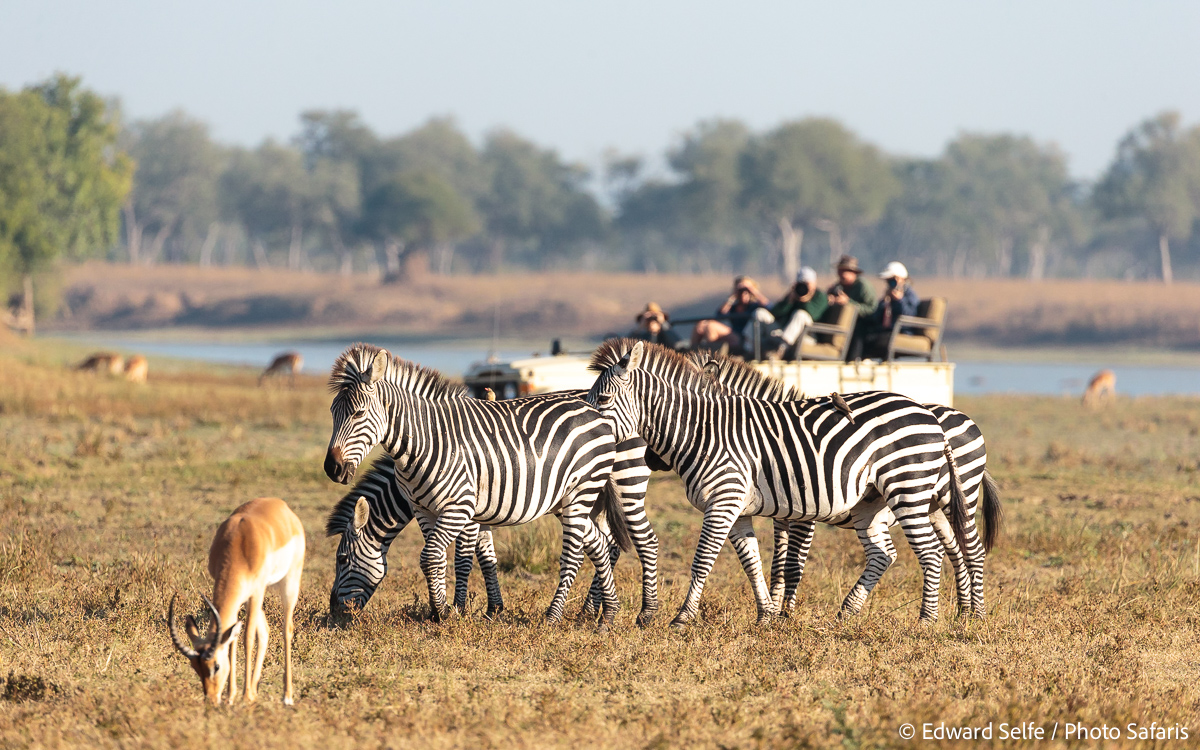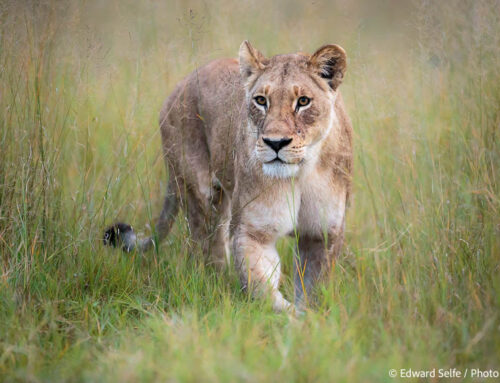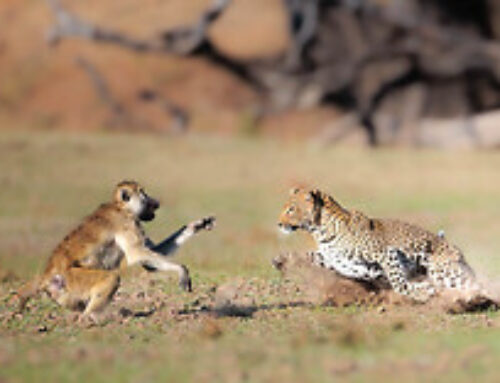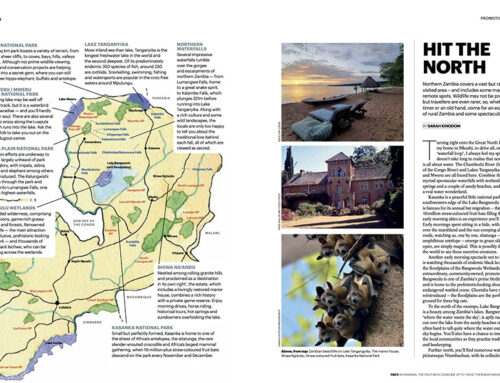The safari guides in South Luangwa are famed across the continent for their knowledge of the bush, their understanding of mammal behaviour, their ability to locate and identify hundreds of bird species and the skill with which they share this with their guests. This has given the Luangwa its well-deserved reputation as a wildlife hotspot to rival any other on the continent.
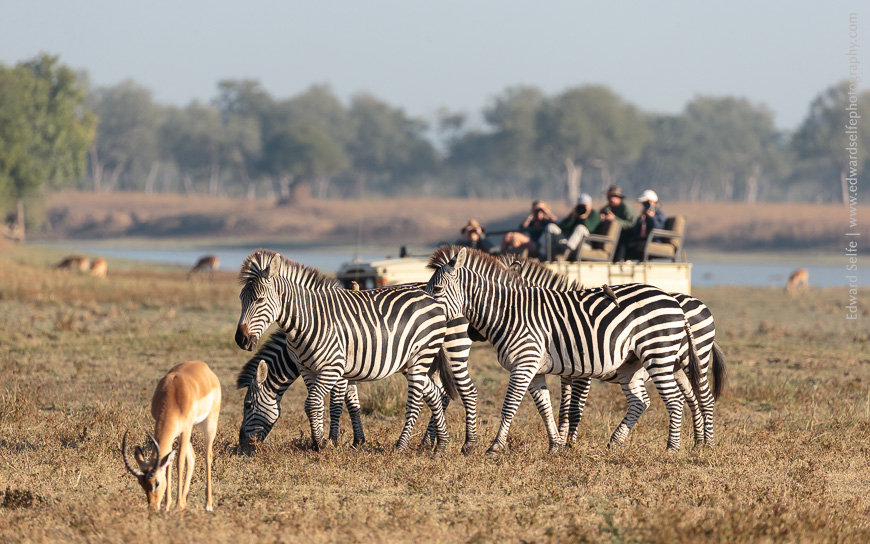
Booking your safari with a Luangwa guide who also has professional photographic experience adds another dimension to your trip. Whether you are a semi-pro photographer or a beginner hoping to improve, you’ll benefit by having a photographer leading your safari.
To illustrate this idea, we’ll look at 5 ways a photographic guide can help any safari visitor get better shots.
Vehicle Positioning
I think this is where a photographer makes the greatest difference to your safari experience. On approaching a sighting, a photographic guide will assess the angle of light, the arrangement of the subjects and also their surroundings, and make a decision where to position the vehicle. So often guides assume that closer is better, and that can be the case sometimes, but a subject’s surroundings are as important to the final image as the subject is.
Knowing that his guests are sitting higher up in the vehicle, a guide with a “photo-mind” will find an area of lower ground or keep his distance from the subject, both of which afford his photographers a lower angle, generating more impressive photos.
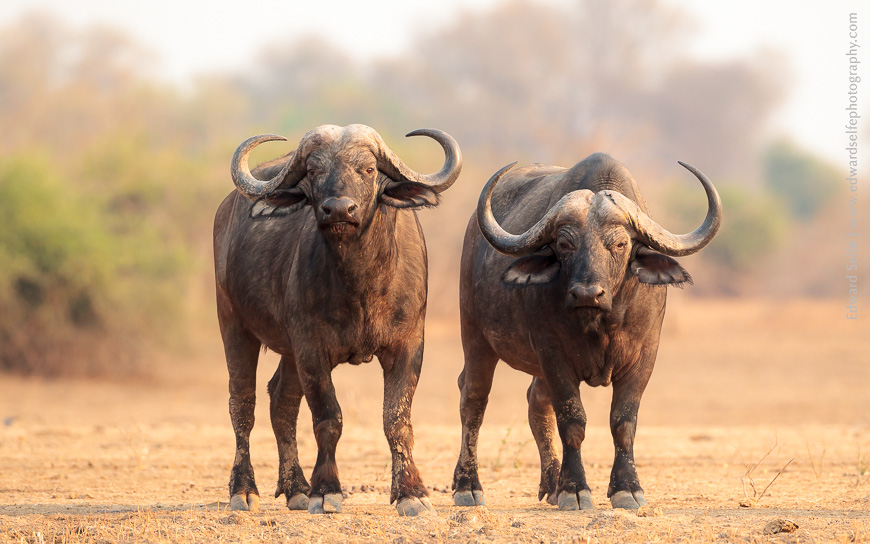
No matter how great your sightings, if your guide doesn’t consider the photographic aspect, you will rarely find yourself in the best spot.
Technical Assistance
A photographic guide will point out and share interesting sightings as you travel through the bush. But he’ll also continually advise on adjusting your camera settings to adapt to the changing light levels and surroundings. As you leave camp in the early morning, he’ll advise on ISO levels, and at night he’ll help you set spot metering and explain why that will give the best results. No more over-exposed, blurry shots of nocturnal mammals!
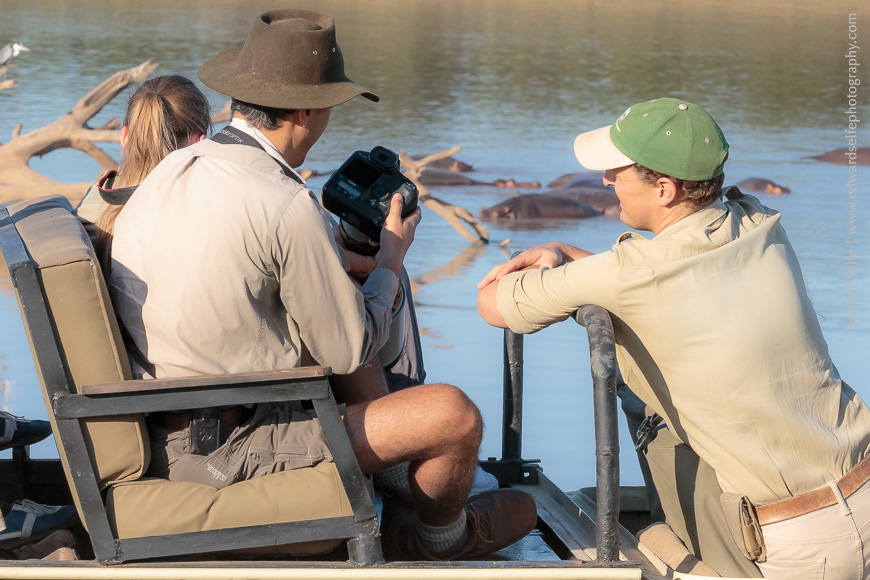
Equally, as you arrive at a sighting, it will help to adjust your settings for the situation; perhaps the fast-moving baboons which are playing along a branch require a higher shutter speed than you might expect; or the proximity of a pride of lions might require smaller apertures to ensure enough depth of field in your portraits. Advice from a photographer who has encountered such situations before (and made the same mistakes!) will be invaluable in understanding and improving your photos.
Maximizing Sightings
Most safari guides will stay with a sighting until everyone has had a good chance to watch and enjoy. However, it may be that photographers need to stay longer; perhaps the light is changing and will improve, or the subjects appear ready to move into a better location.
A good sighting can be enjoyed from one spot, but it may also be interesting to try different angles, using different lighting directions and varied perspectives on the subjects. Making judgements such as these are tricky but a photographer will know that your time on safari is limited and will make the best of it by offering you the largest variety of opportunities.
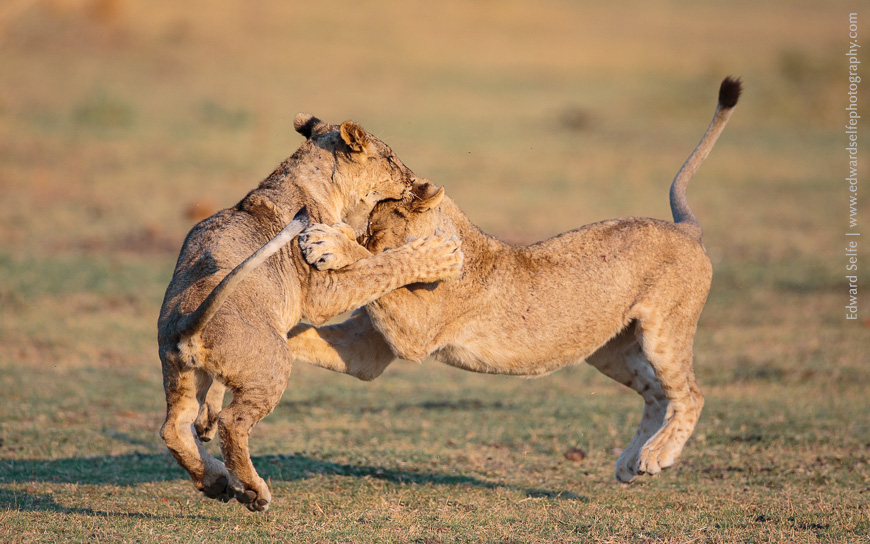
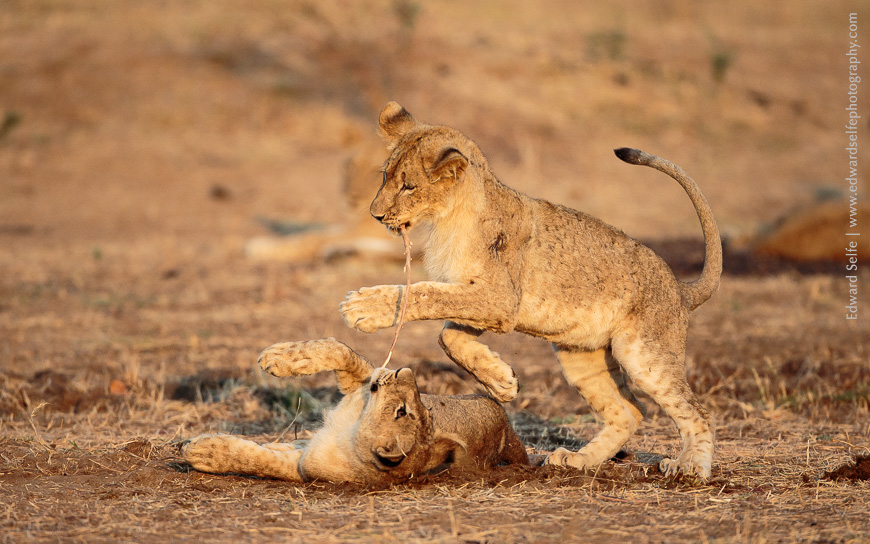
Equally, it may be that some sightings offer little benefit from a photographic point of view, and in this case a photographer would suggest enjoying the encounter and then moving on to seek another opportunity elsewhere.
Safari Planning
It’s true that you can’t predict what the bush will give you each day; this lottery is surely the root pleasure of adventures with wildlife. But a photographic guide will improve your odds!
Imagine a sighting in the Luangwa: you enjoyed a lion pride feeding hungrily on a buffalo after a night’s hunting. A photo-guide might advise not to return in the afternoon as the lions will be replete and sleeping! Better to use the afternoon session to photograph large raptors settling themselves in the golden hour; or seek out a local leopard preparing for a night of hunting. Perhaps the following morning, when the lions have finished their meal and are rousing to drink at the nearest lagoon will be a better time.
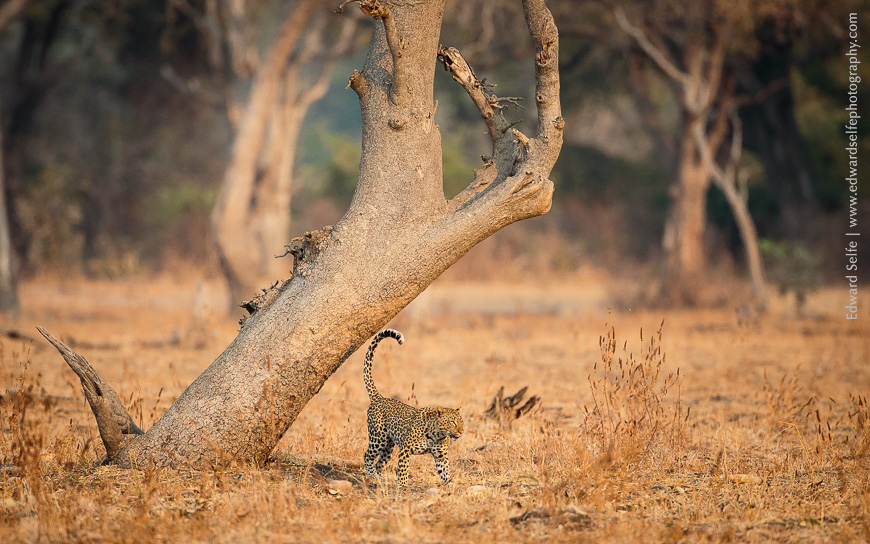
There is so much to see and photograph on a safari that it’s hard to know what to prioritise. You can’t do it all, so a photo-guide’s advice and experience will be valuable in choosing what to select.
Photo Reviewing
Reviewing your images with a critical eye is a useful way to develop your skills and learn from mistakes. In the bush, when you are excited and enjoying the stimulation of a wilderness experience, it’s hard to look objectively at your images. Added to this, in the bright light, you often can’t see the screen on your camera anyway!
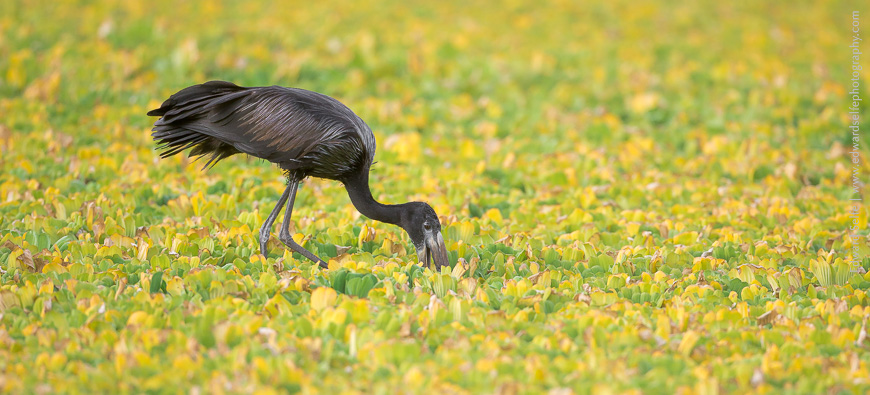
So, looking at your photos on a large screen after lunch each day will help you highlight times that your camera slightly missed focus, or when your shutter speed was not fast enough and the resulting image is not tack sharp.
It’s during these review periods – in the calm environment of camp – that you can discuss how to improve your skills and get the images you want on the next journey into the bush.
So if you are wondering whether you would benefit from having a photographic guide for your next safari, consider contacting me for trip ideas and advice. You could also have a read of my “Am I ready for a Photo Safari” article. Contact me for a chat about your next safari!
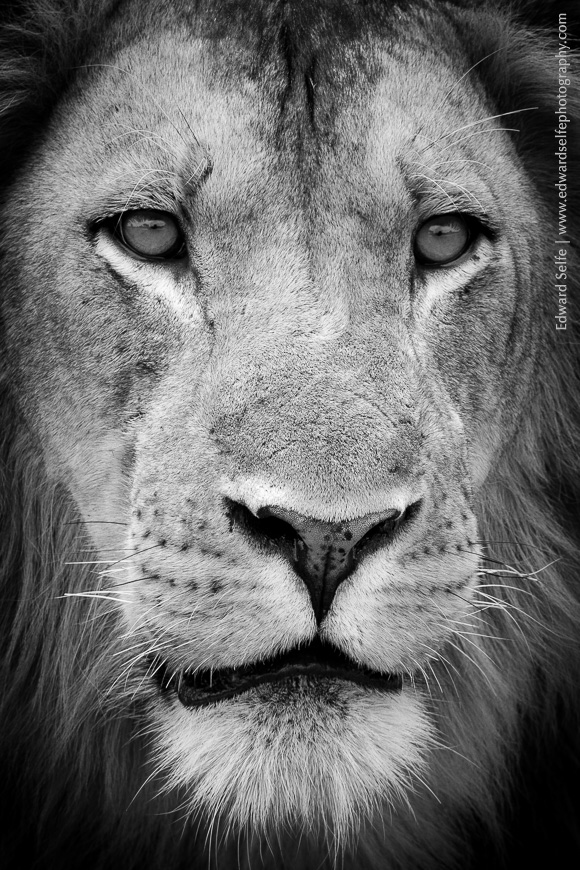
Comments

